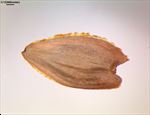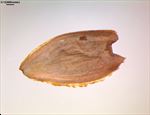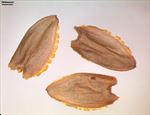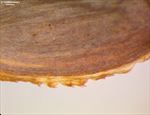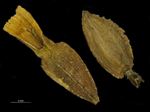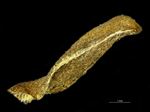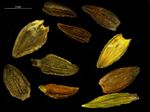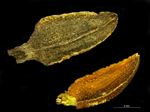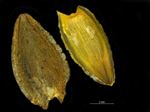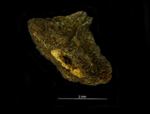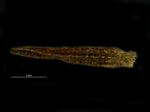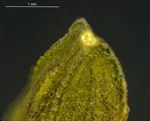Taxonomy
Zinnia elegans L.
Common name
Youth-and-age, common or elegant zinnia.
Description
The central and marginal fruits of this species are slightly dimorphic. Central fruits are flattened and always hairy, while marginal fruits are three-angled and can be hairy or without hairs.
Propagule or dispersal unit is the fruit with or without pappus. Fertile part 5-9 mm long, 2-3.5 mm wide, in side view widest in upper part (obovoid), +/- straight, the upper (apical) end narrowing, in cross-section flattened (central fruits) or three-angled (marginal fruits), basal scar (carpopodium) inconspicuous and undifferentiated, central or off to the side (oblique) or at least asymmetric, beak (=thinner sterile stalk between seed and pappus) absent, wings present, 0-0.5 mm wide, fruit surface light brown or straw, dark brown or black, smooth (except at cellular level), with simple straight hairs in central fruits and no hairs (glabrous) or simple straight hairs in marginal fruits, thickened margin absent, longitudinal ribs absent.
Pappus sometimes of a single awn 0-0.5 mm long in central fruits, or absent as in marginal fruits.
Ecology
Herb, seeds flattened and wind-dispersed. Warm, ideally frost-free regions. Widely cultivated as an ornamental, occasional garden escape.
Native range
Mexico.
Introduced range
United States, Central America, Brazil, Germany, China, Australia.
